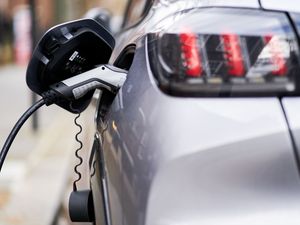What are gigafactories and why do we need them?
Sites will prove to be the backbone of electric car manufacturing.

You may have seen the term ‘gigafactory’ being used more frequently of late. Particularly with the increasing emphasis on electric vehicles, the gigafactory is being thrust into importance. Only today, (June 29), the Society of Motor Manufacturers and Traders (SMMT) has called on the government to create a “binding target” of 60 gigawatt hours of battery capacity to be in place by 2030.
But what are gigafactories and why are they so important? Let’s look at some of the key reasons.
Where did the term ‘gigafactory’ come from?
The term can be traced back to Tesla’s Elon Musk. He’s believed to have been the first person to have coined the phrase during a speech to investors in November 2013. He was speaking in reference to the kind of high-volume production required to deliver the upcoming Model 3 electric car.
It essentially combines ‘giga’ – which is used to describe a measurement that has been multiplied by one billion – with ‘factory’. It’s a way of illustrating a very large battery production site.
But what does a gigafactory make?

>
A gigafactory will be used to create batteries for electric vehicles as well as other EV-related products at scale. By creating batteries and motors in such vast numbers, gigafactories work to drive down the cost of electric vehicles while also speeding up their production.
Are there any in the UK at the moment?
No. As yet, there are no gigafactories in the UK. However, Nissan is planning to create its own gigafactory in the North East of England, with the BBC reporting that the Government is contributing towards the cost of the battery plant’s creation on Wearside where Nissan’s electric vehicles are already made. Currently, only the Envision AESC site in Sunderland is creating batteries at scale, but its production capacity lags behind what would be expected from a gigafactory.
Are there any other gigafactories across the globe?
Certainly. It’ll come as no surprise that Tesla is leading the charge in this area, having created its first gigafactory in June 2014 at a site in Nevada, USA. It also operates gigafactories in Fremont, New York and Shanghai, while sites in Texas and Berlin, Germany are already being built.
However, the race to build gigafactories is well and truly on. Recently, EV specialists Northvolt announced that it would be building a site with Volvo in Northvoltt Ett, Sweden. This is in conjunction with a secondary site in Germany borne through a joint partnership with Volkswagen Group.
But why are gigafactories needed?
As demand for electric vehicles goes up, so does the demand for batteries. In order to cater for this, batteries need to be manufactured on a vast scale – and that’s something that existing car manufacturing sites will struggle to do. It’s why gigafactories are being created in order to manufacture and deliver the vast number of EV components that are going to be required over the coming years.





